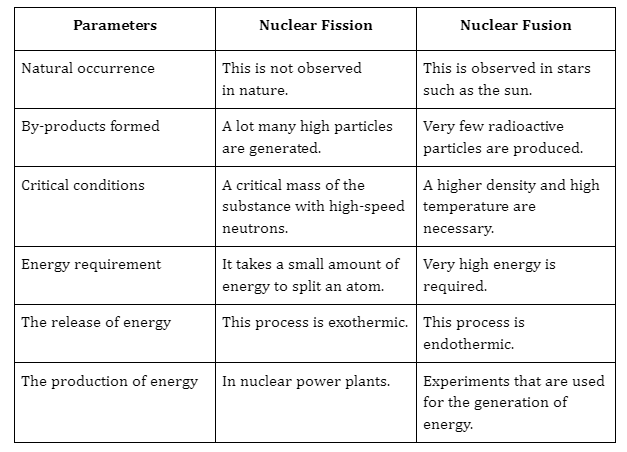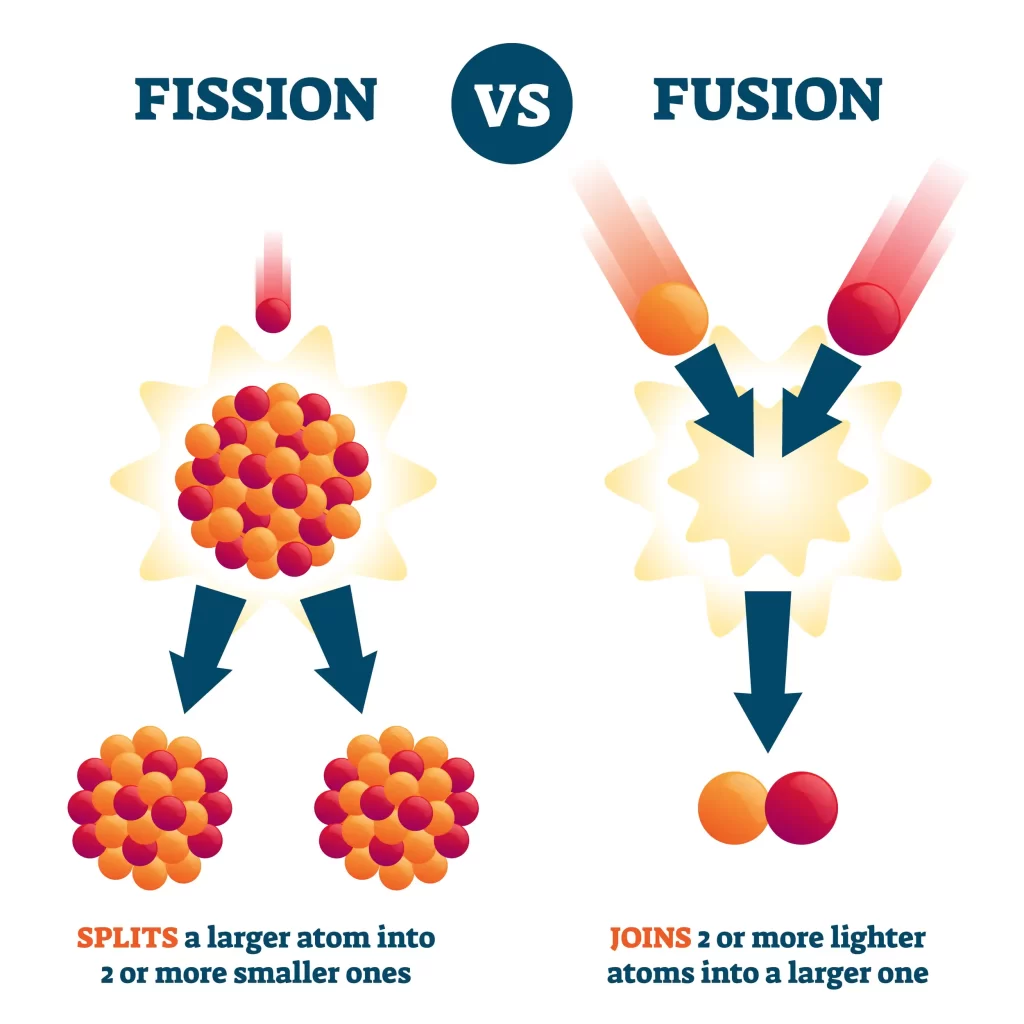Introduction
All of our energy is generated by fundamental chemical and physical processes. Throughout history, this has typically been accomplished by burning carbon-based resources such as wood, coal, and gas, or by utilising the energy of the sun, wind, and water. Through two physical processes known as fusion and fission, atoms can generate vast amounts of energy. They generate millions of times more energy than traditional sources through nuclear processes.
The history of nuclear fusion began at the turn of the 20th century with research into how stars generated their own energy. As potential applications increased to include warfare, energy generation, and rocket propulsion, the field’s emphasis broadened to include a comprehensive examination into the nature of matter and energy. In the 1930s, scientists, led by Hans Bethe, determined that nuclear fusion was the sun’s energy source and that it was both theoretically and practically practicable.
The term “fission” is used to describe the splitting of a heavy nucleus into two roughly equal-sized lighter nuclei. The revelation that such an unusual nuclear reaction could occur marked the conclusion of a really spectacular event in the history of science, and it ushered in an era of intense and fruitful research.
What is Nuclear Fission?
Fission refers to the fragmentation of anything into smaller pieces. In this sense, nuclear fission refers to the splitting or fragmentation of a large atom into two or more smaller atoms. These little atoms are technically light in weight. Breakdown of the nuclear fission process releases large amounts of energy, proving that it is an exothermic process. The uranium fission process is described below.

Nuclear Fission Reaction
What is Nuclear Fusion?
The word “fuse” means joining two or more other objects. The process by which two or more atoms come together to form a bigger atom is known as nuclear fusion. Because the act of fusing two atoms needs consuming energy, nuclear fusion is endothermic.
The Distinction between Nuclear Fission and Nuclear Fusion in Tabular form:


Nuclear Fission vs Nuclear Fusion
What are Nuclear Fission and Nuclear Fusion in Physics?
The two basic natural forces that bind atoms together are weak and strong nuclear bonds. The total amount of energy held in atomic bonds is referred to as the binding energy. The greater the amount of binding energy stored inside the bonds, the more stable the atom. Atoms make additional efforts to promote stability by increasing their binding energy.
Nuclear Fusion versus Nuclear Fission
The differences between nuclear fusion and nuclear fission are given below :

Use of Nuclear Fission and Nuclear Fusion
Both nuclear fission and fusion have many potential uses. Use of nuclear fission in power generation is significant.
- Thermal energy for nuclear power plants is generated through nuclear fission. This heat is then used to turn water into steam, which is then used to power electrical generators.
- About 21.5% of the electricity in the US comes from nuclear power plants. Nuclear fission employing uranium-235, which is also used in photographic sources, produces cesium-137 (Cs-137) and other rare radioisotopes. Nuclear fission energy can be used to power submarines and even some types of surface watercraft. Radioactive isotopes created from nuclear fission are employed in many types of medical imaging and cancer treatment.
- This is a perfect example of how nuclear fusion can be put to good use. After combining at the sun’s core, hydrogen nuclei release a tremendous amount of heat, which we feel as helium’s presence on Earth. Fusion might potentially become the primary commercial electricity generation method.
- There are several potential applications for the energy produced by fusion reactions, including but not limited to: space heating, industrial processes, fissile fuel for fission reactors, and synthetic fuel.
Summary
An atom is split into two parts by a process known as nuclear fission, which is done to produce energy. The splitting of the uranium-235 nucleus when it is bombarded with neutrons is an important example of nuclear fission. On the other hand, it happens when two atoms combine and release energy. The name for this energy-producing process is nuclear fusion. This is how the Sun and other stars emit energy.
Frequently Asked Questions:
1. Apart from uranium, which other element is commonly used as fuel in fission reactors?
Ans: Thorium outnumbers uranium in the natural world. It can only be used as a fuel when combined with a fissile substance, like reprocessed plutonium, because it is fertile rather than fissile on its own. Fissile uranium-233 can be produced using thorium fuels and employed in a variety of nuclear reactor designs.
2. What is the moderator used in nuclear reactor?
Ans: To mitigate the dangers of fast-moving neutrons, a moderator is inserted into the nuclear reactor core. Forcing a nuclear chain reaction is much simplified by the inclusion of a moderator.
3. What particle is used to trigger the fission of a uranium nucleus?
Ans: Fission happens when a neutron collides with an atom, causing it to become excited and divide into two smaller atoms (called fission products). Moreover, extra neutrons are released, which can set off a chain reaction. Each atomic fission results in the release of vast amounts of energy.

